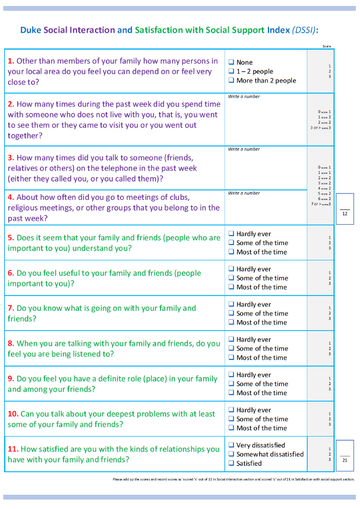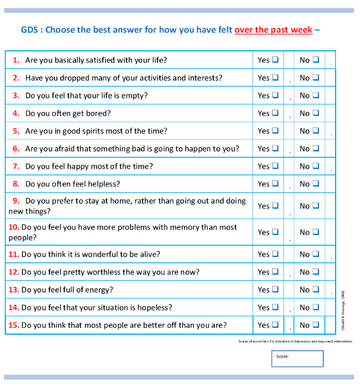Loneliness and Social Isolation in people with Parkinson’s Disease during COVID-19 restrictions
Poster
Idiopathic Parkinson’s disease is a Dopamine deficient state of the Substantia Nigra Pars Compacta of the central nervous system characterised by clinical signs of bradykinesia and tremor, rigidity and postural instability. Parkinson’s disease is more than a combination of motor symptoms and there is an association with plenty of non-motor symptoms. Elements of this can be seen in James Parkinson’s ‘Essay on shaking palsy‘ 1 and have been brought into clinical practice by Ray Chaudhuri et al 2.
In my clinical practice, for a long time, I have noticed that there is a social side of Parkinson’s disease that does not draw enough attention very often. People with Parkinson’s disease suffer from social isolation and loneliness. During my MSc on Gerontology, for my dissertation, I wished to explore social isolation and loneliness in Parkinson’s disease. Social isolation and loneliness in Parkinson’s disease have not been adequately explored in scientific literature. I found only two studies in the preceding ten years which researched social isolation and loneliness in Parkinson’s disease 3,4. Another paper was published in July 2018 and it was too late to be included in my literature review. Due to ethical issues (if I found people are lonely and socially isolated, then they are at risk – and I cannot treat nor I can write to their GPs about it, but I cannot do ‘nothing’ either) the focus of my dissertation has to be on social engagement in people with Parkinson’s disease. The work was submitted in September 2018 and remains unpublished. I found that social engagement may increase after diagnosis of Parkinson’s disease – but the overall trend is that of a decline.
Loneliness and social isolation project a significant risk for health. Social isolation has links with cardiovascular and mental health 5. Loneliness increases the likelihood of death by 26% 6. Social isolation and loneliness lead to an increased risk of death (data analysis from the UK BioBank cohort study) 7. Therefore we must enquire about social isolation and loneliness when we see our patients with Pd.
To understand the extent of loneliness and social isolation amongst people with Parkinson’s disease I began to design a questionnaire that can be used in conjunction with the non-motor symptoms questionnaire (Ray Chaudhuri 2) that we have been using. I began this process at end of 2019.
Initially, For social isolation I used the single question ‘Are you feeling lonely?’ with an empty box to write ‘yes’ or ‘no’ and I found it is a bit inadequate to enquire about the state of loneliness. I reflected on this and included the English Longitudinal Study of Ageing single question on loneliness (ELSA-1) 8 and the revised University of California, Los Angeles (UCLA) 3 item loneliness scale (UCLA-3) 9 to bring a quantitative element in my enquiry about a completely subjective feeling. The durability, reliability and simplicity of these scales were influential in their selection. I also reckoned that this would be the best way of making our questionnaire aligned with the nationally recommended measures of loneliness for adults 10.
For social isolation, I chose Duke’s Social Support Index (DSSI) 11. This 11 point scale enquires about both social interaction and satisfaction with social support. The simplicity of using this was the main reason for choosing this scale.
To understand more about the impact of loneliness and social isolation, I included a 15 point geriatric depression scale as well 12.
Data collection began towards the end of 2019 and then it was halted due to the Pandemic.
During the period, when we stopped seeing patients in the out-patients – or even making phone calls or video calls, it gave me the time to contemplate on our initial questionnaire and allowed me to make improvements.
When OPD resumed, we sent our patients the questionnaire to be filled in and returned. When face to face appointments resumed – we asked patients to fill the questionnaires in as they wait in the waiting area.
References:
1. Parkinson J. An essay on the shaking palsy. 1817. J Neuropsychiatry Clin Neurosci. 2002 Spring;14(2):223-36; discussion 222. doi: 10.1176/jnp.14.2.223. PMID: 11983801.
2. Chaudhuri KR, Martinez-Martin P, Schapira AHV, Stocchi F, Sethi K, Odin P et al (2006) ‘An international multicentre pilot study of the the first comprehensive self-completed non motor symptoms questionnaire for Parkinson’s disease: The NMSQuest study’ Mov Disord; 21(7):916-923.
3. Soleimani MA, Negarandeh R, Bastani F, Greysen R. Disrupted social connectedness in people with Parkinson's disease. Br J Community Nurs. 2014 Mar;19(3):136-41. doi: 10.12968/bjcn.2014.19.3.136. PMID: 24897835.
4. Björg Thordardottir, Maria H. Nilsson, Susanne Iwarsson & Maria Haak (2014) “You plan, but you never know” – participation among people with different levels of severity of Parkinson’s disease, Disability and Rehabilitation, 36:26, 2216-2224, DOI: 10.3109/09638288.2014.898807
5. Courtin, E. and Knapp, M. (2017), Social isolation, loneliness and health in old age: a scoping review. Health Soc Care Community, 25: 799-812. https://doi.org/10.1111/hsc.12...
6. Holt-Lunstad J, Smith TB, Baker M, Harris T, Stephenson D. Loneliness and social isolation as risk factors for mortality: a meta-analytic review. Perspect Psychol Sci. 2015 Mar;10(2):227-37. doi: 10.1177/1745691614568352. PMID: 25910392.
7. Elovainio M, Hakulinen C, Pulkki-Råback L, Virtanen M, Josefsson K, Jokela M, Vahtera J, Kivimäki M. Contribution of risk factors to excess mortality in isolated and lonely individuals: an analysis of data from the UK Biobank cohort study. Lancet Public Health. 2017 May 4;2(6):e260-e266. doi: 10.1016/S2468-2667(17)30075-0. Erratum in: Lancet Public Health. 2019 Jun;4(6):e280. PMID: 28626828; PMCID: PMC5463031.
8. S. Vingeliene, et al. Longitudinal analysis of loneliness and inflammation at older ages: English longitudinal study of ageing Psychoneuroendocrinology, 110 (2019), p. 104421
9. Hughes ME, Waite LJ, Hawkley LC, Cacioppo JT. A Short Scale for Measuring Loneliness in Large Surveys: Results From Two Population-Based Studies. Research on Aging. 2004;26(6):655-672. doi:10.1177/0164027504268574
10. https://www.ons.gov.uk/peoplep...
11. George LK, Blazer DG, Hughes DC, Fowler N. Social support and the outcome of major depression. Br J Psychiatry. 1989 Apr;154:478-85. doi: 10.1192/bjp.154.4.478. PMID: 2590779.
12. Sheikh, J. I., & Yesavage, J. A. (1986). Geriatric Depression Scale (GDS): Recent evidence and development of a shorter version. Clinical Gerontologist: The Journal of Aging and Mental Health, 5(1-2), 165–173. https://doi.org/10.1300/J018v0...

1. Loneliness Questions

2. DSSI Questionnaire

3. GDS Questionnaire
Summary
More Parkinson's Academy COVID-19 Projects
'The things you can't get from the books'
Parkinson's Academy, our original and longest running Academy, houses 23 years of inspirational projects, resources, and evidence for improving outcomes for people with Parkinson's. The Academy has a truly collegiate feel and prides itself on delivering 'the things you can't get from books' - a practical learning model which inspires all Neurology Academy courses.